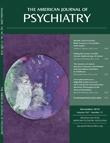High-Field Magnetic Resonance Imaging of Suicidality in Patients With Major Depressive Disorder
Abstract
Objective:
Suicide is a major social and public health problem, but its neurobiology in major depressive disorder is poorly understood. The purpose of this study was to use magnetic resonance diffusion tensor imaging to characterize abnormalities of white matter integrity in major depressive disorder patients with and without a history of suicide attempts.
Method:
Participants were 52 patients with major depressive disorder, with (N=16) and without (N=36) a history of suicide attempts, and 52 healthy comparison subjects matched for age, gender, education, and ethnicity. Diffusion tensor imaging in a 3.0 Tesla magnetic resonance scanner was performed. Whole-brain voxel-based analysis was used to compare fractional anisotropy across the three groups and analyze the correlation with symptom severity. A region-of-interest analysis was applied to the bilateral hippocampus, thalamus, and lentiform nucleus
Results:
Fractional anisotropy was decreased in the left anterior limb of the internal capsule in suicide attempters relative to both nonattempters and healthy comparison subjects, in the right frontal lobe relative to comparison subjects only, and in the right lentiform nucleus relative to nonattempters only. There was no significant correlation with symptom severity.
Conclusions:
Decreased fractional anisotropy in the left anterior limb of the internal capsule appears to characterize patients with major depressive disorder who have a history of attempting suicide. Longitudinal studies are required to validate this as a potential marker that may inform the development of strategies for reducing suicide.



